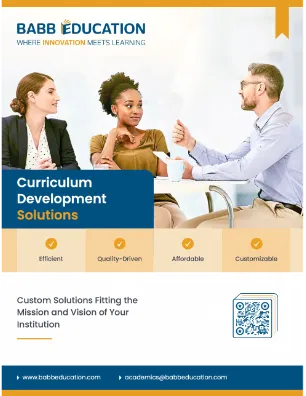In instructional design, storytelling offers a transformative way to make learning more engaging and effective. By weaving narrative techniques into course content, learning activities, and assessments they create content that resonates, motivates, and leaves a lasting impact on learners.
Why Storytelling Works in Instructional Design
At its core, storytelling appeals to how humans process information. Research in neuroscience shows that stories activate multiple areas of the brain, creating an immersive experience where facts and emotions intertwine. This cognitive and emotional engagement makes storytelling a powerful tool in education.
Key Benefits of Storytelling in Learning
Improved Engagement
Stories capture attention by creating curiosity and emotional investment. Learners are more likely to stay focused when the material
feels relevant and relatable.
Enhanced Retention
A well-crafted narrative makes complex concepts easier to understand and
remember. Learners are more likely to recall information better when it is presented within a story rather than as isolated facts.
Fostering Connection
Stories humanize content, helping learners see themselves in the
material. They bridge gaps between theoretical knowledge and real-world application, making learning feel both personal and meaningful.
Motivating Learners
By framing challenges as part of a story arc, learners are encouraged to
see themselves as heroes overcoming obstacles, fostering a growth mindset and intrinsic motivation.
Key Narrative Techniques for Instructional Design
Incorporating storytelling into instructional design doesn’t require crafting epic tales. Even simple narrative elements can transform the learning experience. Here are several effective techniques:
The Hero’s Journey
This classic narrative framework, outlined by American author Joseph Campbell, follows a hero as they face challenges, receive guidance, and ultimately triumph. In instructional design, the learner becomes the hero. For example, you can:
- introduce a problem (the call to adventure).
- provide resources or knowledge (the mentor’s guidance).
- challenge learners with tasks (trials).
- celebrate their achievements (the resolution).
Scenarios
Fictional and nonfictional scenarios, when grounded in storytelling, make abstract concepts concrete. For instance, instead of teaching project management principles in isolation, present a scenario for which learners guide a fictional team to complete a high-stakes project.
Character Development
Create relatable characters who face challenges similar to those learners may encounter. These characters can serve as guides, collaborators, or cautionary tales, adding depth and relatability to the content.
Conflict and Resolution
Introduce a conflict that learners can resolve through using course material. For example, a lesson on cybersecurity could revolve around preventing a fictional data breach, allowing learners to apply their knowledge in a high-stakes scenario.
Emotional Hooks
Incorporate language designed to evoke emotions—whether it’s curiosity, empathy, or excitement. A compelling opening question, a surprising fact, or a relatable anecdote can draw learners into a story.
Practical Steps for Integrating Storytelling into Instructional Design
Step 1: Define Learning Objectives
Begin with clear goals. Determine what you want learners to know or do by the end of the course. Align the narrative to these objectives, ensuring the story supports learning rather than distracts from it.
Step 2: Know Your Audience
Understanding your students’ backgrounds, interests, and challenges is key to crafting stories that resonate. College students often come from diverse cultural, academic, and personal experiences, and tailoring narratives to reflect these differences can enhance engagement. For instance, in a business ethics course, a professor might use a story about a recent graduate navigating ethical dilemmas in their first job. This scenario mirrors the challenges students anticipate in their post-college careers, making the content more relatable. Similarly, in a history class, framing lessons around a fictional college student researching their family’s immigrant past can help learners connect personally with broader historical themes. By aligning stories with your students’ aspirations and contexts, you create a narrative that feels relevant, fostering deeper engagement and learning.
Step 3: Develop a Narrative Framework
Decide on the structure of your story. Will you use a linear progression, like a case study, or a branching narrative, where learners choose their own path? Map out key elements such as the setting, characters, conflict, and resolution.
Step 4: Incorporate Multimedia
Use visuals, audio, and interactive elements to bring your story to life. A narrated animation, for example, can immerse learners in a fictional scenario, while interactive decision-making tools let them actively participate in the story.
Step 5: Engage Learners Actively
Let learners play a role in the story. Interactive elements like quizzes, role-playing exercises, or simulations make the narrative more dynamic and participatory.
Step 6: Evaluate and Refine
Gather feedback to assess whether the storytelling approach is effective. Use surveys, performance metrics, and direct input from learners to refine your narrative techniques over time.
Remember, storytelling is more than just a tool for entertainment—it’s a transformative strategy for instructional design. By incorporating narrative elements, educators and designers can create learning experiences that captivate, educate, and inspire.
Contact Babb Education today to learn more about how we can partner with you to design engaging, story-driven courses that meet learning outcomes, foster deeper connections, and leave a lasting impact on your students.



